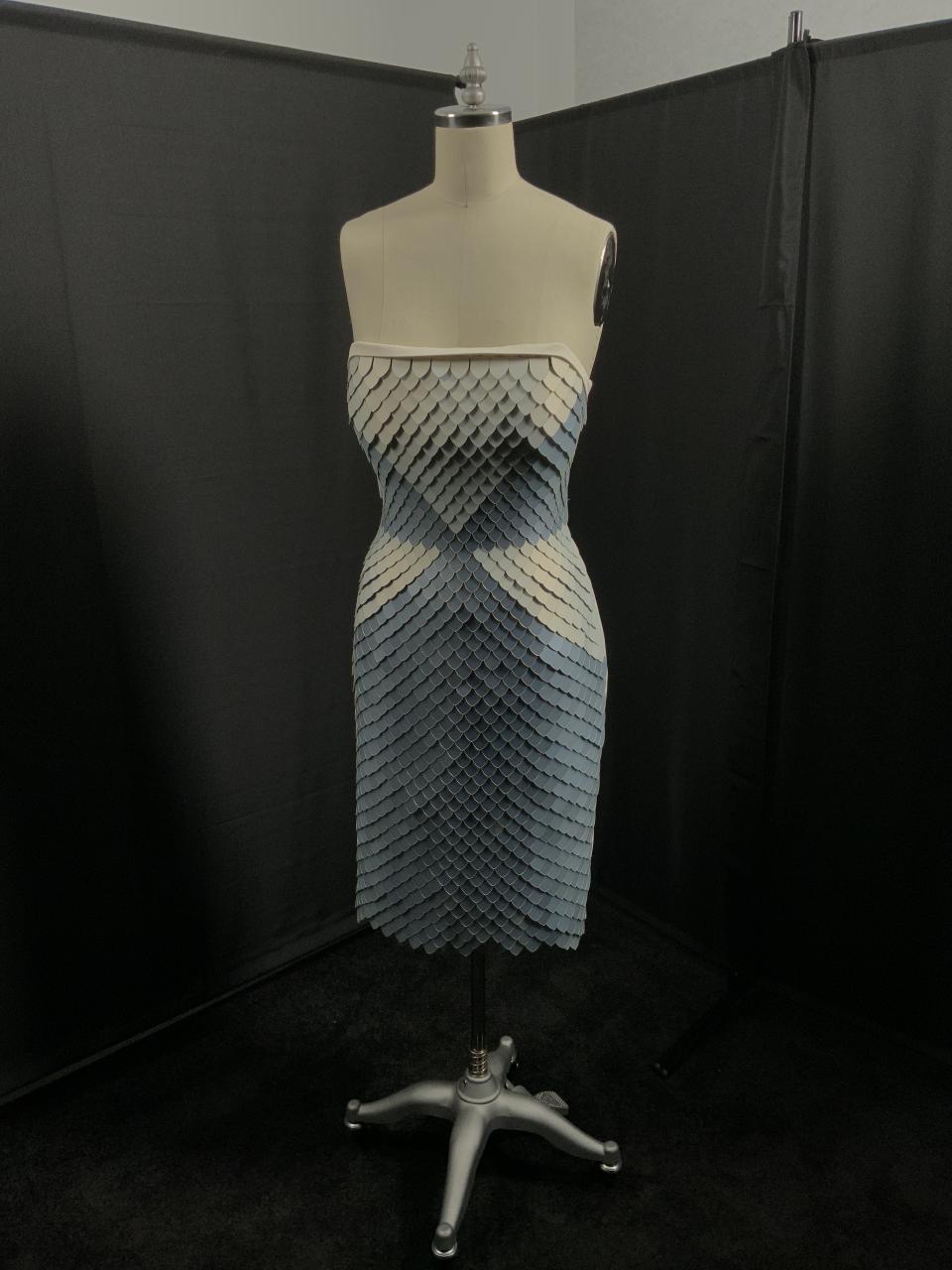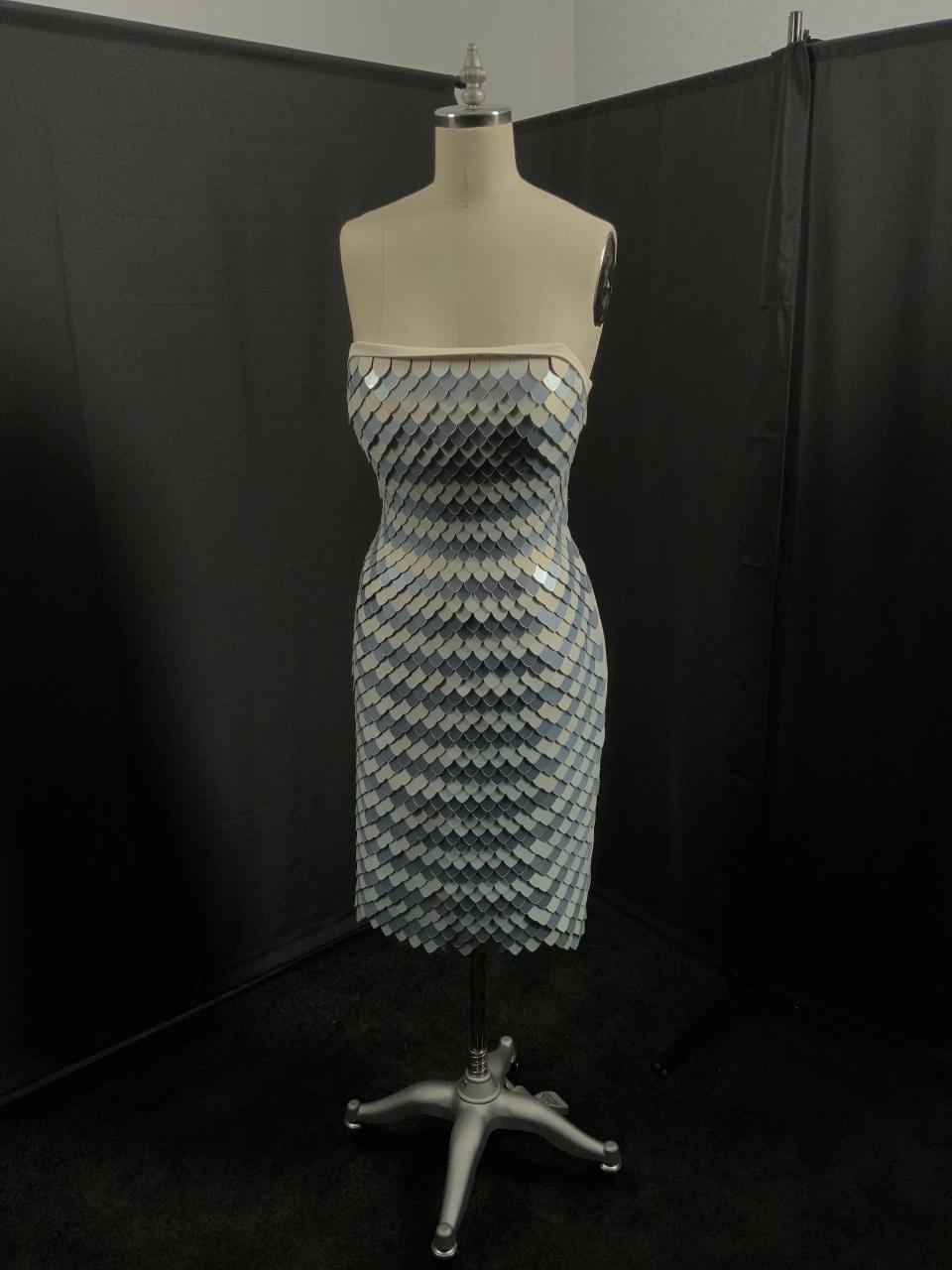Engineers Behind Adobe’s Interactive Dress Explain How It Changes Patterns Within Seconds

Adobe, the tech company known for its software programming, blew audiences away when it debuted its first digital dress. At Adobe’s annual Max conference in Los Angeles in October, research scientist Christine Dierk revealed her cutting-edge creation, which is nearly five years in the making.
“I’ve been joking that I’ve finally finished my internship project,” Dierk told WWD. “When I started as an intern in 2019, I was tasked with making the dress in a single summer. Obviously, it took me a little longer than that.”
More from WWD

Titled Project Primrose, Dierk collaborated with fellow Adobe engineer, TJ Rhodes, to try to innovate in the wearable technology space. As demonstrated by Dierk during the conference, the dress uses laser-cut polymer dispersed liquid crystal “petals” to change patterns within seconds. Each petal is underlaid with a printed circuit board, which allows them to fluctuate between shades of gray and ivory.
Dierk and Rhodes first experimented with the petals by sticking them to a two-dimensional canvas. Then, they created their first wearable prototype: a handbag.
“The electronics allow us to tile the petals onto any surface,” Dierk said. “So it could be a handbag, it could be a wall, it could even be furniture with these display elements integrated in different ways.”
For Dierk, whose dissertation focused on the relationship between technology and the body, Project Primrose was an opportunity to combine her scientific passions with one of her favorite hobbies: sewing. The clothesmaking craft even runs in Dierks’ family — her grandmother, a seamstress, once owned a fabric store.

In 2018, Dierk began sewing her own dresses, then outfits for her baby niece. She picked up new techniques with the help of Google and YouTube and eventually brought her self-taught tailoring skills into the Adobe laboratory, stitching each PDLC petal onto her digital dress by hand.
“I didn’t start sewing until Christine showed up,” Rhodes said. “I haven’t actually gone as far as making garments, but being around the craft and working with it has definitely changed how we approach integrating electronics into garments.”
Project Primrose isn’t Adobe’s first foray into the fashion world. Luxury brands like Prada and Hugo Boss have teamed with the company to promote various software initiatives, including 3D design and customer data programs.
Dierks’ interactive dress, however, does mark a new frontier for Adobe in terms of fashion-adjacent hardware. Designers including Zac Posen have experimented with similar mediums, incorporating LED lights into custom couture for stars like Claire Danes and Lupita Nyong’o.
“As soon as you want progress, it’s really technology that’s driving it, and that doesn’t mean it has to be something digital or electronic,” Rhodes said. “If you want to see innovation in the fashion space, we need to apply technology to it. Technology makes things easier, makes things more practical, and hopefully it could help make the fashion industry more sustainable.”
The digital dress’ ability to change shades and patterns certainly lends itself to sustainability. Through Project Primrose, Rhodes and Dierk envision designers pushing several downloadable designs for a singular garment, therefore extending its life. They also hope to challenge the traditional relationship between designers and consumers, allowing the latter to customize clothes to their liking.
The future of Project Primrose is, at least for now, in flux. The software needed to make the dress operate hasn’t yet been created, though Rhodes and Dierk are excited about the prospects of their new medium.
“The plan was just see what’s possible, to push the bounds of what’s possible,” Rhodes said. “What do we do next? That’s the question we’re asking ourselves internally.”
“The main goal was really just to inspire people, both in technology and fashion,” Dierk added.
Best of WWD


